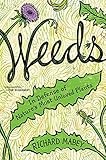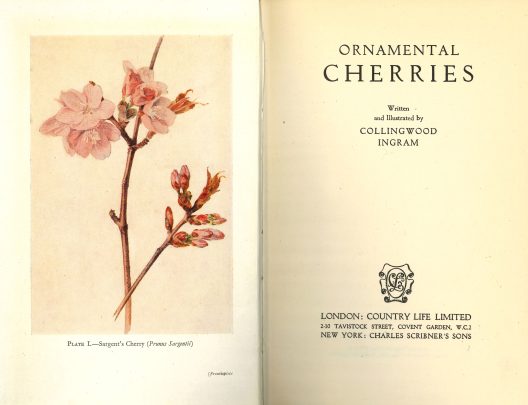Cedric Morris (1889-1982) is renowned in equal measure for his painting and his plant expertise. He was born in Wales to an upper middle class family whose money came from copper and tin mining. His keen attention to plants and landscape is rooted in the Gower Peninsula of southwest Wales, where he painted the natural beauty of its flora and fauna, its cliffs and coves, moors and meadows. His family’s educational aspirations for him (studying voice) did not suit him, and painting became his true vocation. He was studying in Paris in 1914 when World War I broke out and he returned to Britain where he joined the Artists’ Rifles, serving until ill health led to his discharge.
 In Cornwall, he became part of the artistic community, and continued to draw and paint plants. He moved to London, where he met fellow painter Arthur Lett-Haines (known as ‘Lett’), who was to become his partner in life and art. Morris was private and quiet where Lett was highly social,which proved helpful in promoting Cedric’s art. They spent the 1920s moving in artistic circles in England and Paris, where they were associates of Marcel Duchamp, Man Ray, Francis Picabia, Ezra Pound, and others. Although Morris was exposed to all the art movements of the day (Futurism, Abstraction, Surrealism), and no doubt absorbed some of their influences, he was steadfast in his love of color and the depiction of plants and landscapes for their own intrinsic interest. Before the Second World War, he and Lett traveled throughout western Europe, where he continued to find subjects for painting.
In Cornwall, he became part of the artistic community, and continued to draw and paint plants. He moved to London, where he met fellow painter Arthur Lett-Haines (known as ‘Lett’), who was to become his partner in life and art. Morris was private and quiet where Lett was highly social,which proved helpful in promoting Cedric’s art. They spent the 1920s moving in artistic circles in England and Paris, where they were associates of Marcel Duchamp, Man Ray, Francis Picabia, Ezra Pound, and others. Although Morris was exposed to all the art movements of the day (Futurism, Abstraction, Surrealism), and no doubt absorbed some of their influences, he was steadfast in his love of color and the depiction of plants and landscapes for their own intrinsic interest. Before the Second World War, he and Lett traveled throughout western Europe, where he continued to find subjects for painting.
In the late 1930s, Morris and Lett founded the East Anglian School of Painting and Drawing, an informal place that allowed students to discover their own potential. In 1939, friend and student Lucian Freud dropped a lit cigarette, and the school burned down. With the help of painter-dancer Paul Odo Cross (partner of writer Angus Wilson), the school was rebuilt at Benton End,where it continued into the 1960s. Here Morris was able to pursue his love of plants, particularly bearded irises, which thrived in the sunny, dry setting. World War II restrictions meant that only a small percentage of land could be devoted to flowers, and the irises were ploughed under to grow potatoes. Undaunted, Morris was active in iris societies, fascinated by the many possibilities of breeding for new colors, particularly the right shade of pink. He developed ‘Shell Pink,’ ‘Flamingo Pink,’ and ‘Strawberry Blond,’ among many other cultivars. He bred a whole series of ‘Benton’ irises, including one named ‘Benton Lett.’ Beth Chatto, who visited the gardens at Benton End in the early 1950s, became a close friend, and grew a wide variety of plants which Morris gave her. Vita Sackville-West was also a regular visitor at his June iris parties. Morris grew over 1,000 varieties of iris and bred at least 90.
When Morris died in 1982, the Royal Horticultural Society’s ‘Lily Group’ wrote an obituary, excerpted here: “Famous as a gardener for growing the near impossible, not just for a season but for a generation.” In the 21st century, some of his iris cultivars are back in cultivation, and his paintings have undergone a rediscovery, with several recent exhibits. There is also renewed interest in Morris and Lett as a couple, with the publication of biographies such as this one.
Reviewed by Rebecca Alexander
 a lasting impression” she provided was extensive and quite varied. Many are in her personal collection.
a lasting impression” she provided was extensive and quite varied. Many are in her personal collection. a lasting impression” she provided was extensive and quite varied. Many are in her personal collection.
a lasting impression” she provided was extensive and quite varied. Many are in her personal collection. I was not surprised that the list of books “that have made a lasting impression” she provided was extensive and quite varied. Many are in her personal collection.
I was not surprised that the list of books “that have made a lasting impression” she provided was extensive and quite varied. Many are in her personal collection. I was most surprised by a book unfamiliar to me: “The Garden of Life: An Introduction to the Healing Plants of India” by Naveen Patnaik. This 1993 publication was in Rebecca’s personal collection before she joined the Miller Library.
I was most surprised by a book unfamiliar to me: “The Garden of Life: An Introduction to the Healing Plants of India” by Naveen Patnaik. This 1993 publication was in Rebecca’s personal collection before she joined the Miller Library. environmental disaster overtaking the river ecosystem with the destruction of the forest for farming and other pursuits.
environmental disaster overtaking the river ecosystem with the destruction of the forest for farming and other pursuits. comprehensive and finely illustrated volume on this important group of decorative shrubs which has ever appeared.” The Miller Library now has the revised, 1955 edition – a gift from the author.
comprehensive and finely illustrated volume on this important group of decorative shrubs which has ever appeared.” The Miller Library now has the revised, 1955 edition – a gift from the author. Ingram brought more than 50 varieties of cherries back to his home in Sussex, England; planting them amongst companion trees while learning techniques for successful propagation. This allowed him to revive some varieties that likely would have been lost, even reintroducing them to Japan. In his writing, he also discusses companion planting, threats from diseases and insects, and shares his experience at creating bonsai specimens.
Ingram brought more than 50 varieties of cherries back to his home in Sussex, England; planting them amongst companion trees while learning techniques for successful propagation. This allowed him to revive some varieties that likely would have been lost, even reintroducing them to Japan. In his writing, he also discusses companion planting, threats from diseases and insects, and shares his experience at creating bonsai specimens. One of its three co-authors is Thomas P. Pirone, the son of the original author.
One of its three co-authors is Thomas P. Pirone, the son of the original author.